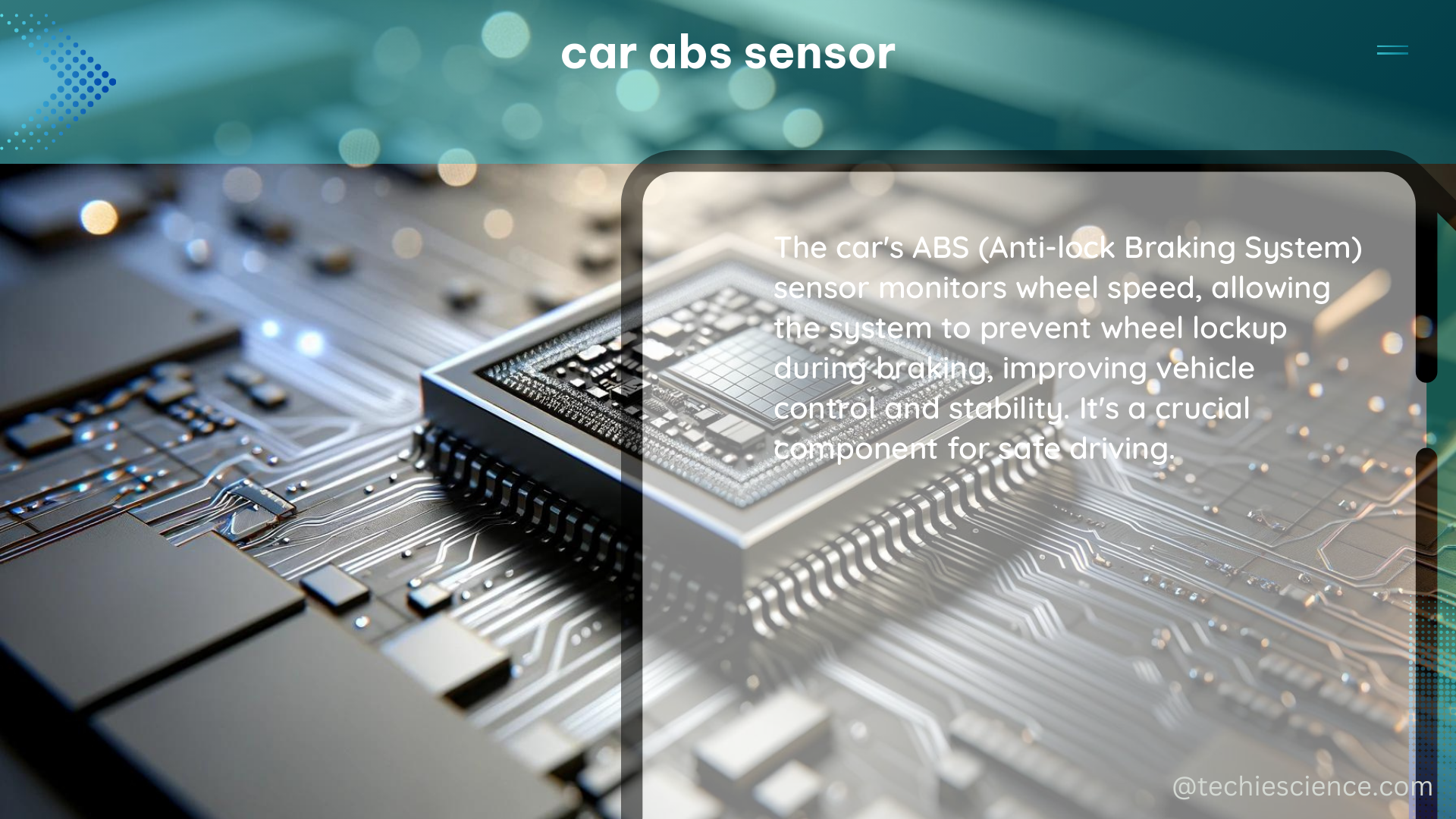ABS (Anti-lock Braking System) sensors, also known as wheel speed sensors, are critical components in modern vehicles, responsible for ensuring the safety and performance of the braking system. These sensors measure the rotational speed of each wheel and provide this information to the vehicle’s ABS control unit, which then uses the data to prevent wheel lock-up during emergency braking, maintaining vehicle stability and steerability.
Types of ABS Sensors
ABS sensors can be categorized into two main types: active and passive.
Active ABS Sensors
Active ABS sensors have integrated electronics and are supplied with a defined voltage from the ABS control unit. They use a multipole ring as an impulse wheel, which is integrated into the sealing ring of a wheel bearing. The sensor generates a digital signal that is proportional to the wheel speed, allowing the ABS control unit to accurately monitor the rotational speed of the wheel.
Active ABS sensors typically have the following specifications:
- Power supply voltage: 8-12 VDC
- Output signal: Digital square wave
- Frequency range: 0.5 Hz to 10 kHz
- Sensor gap: 0.5-2.0 mm
Passive ABS Sensors
Passive ABS sensors, on the other hand, do not require a separate power supply from the control unit. They rely on the changing magnetic field induced by the rotation of the impulse wheel to generate a measurable alternating voltage. The frequency and amplitude of this alternating voltage are directly related to the wheel speed, allowing the ABS control unit to determine the rotational speed of the wheel.
Passive ABS sensors typically have the following specifications:
- Output signal: Alternating voltage
- Frequency range: 0.5 Hz to 10 kHz
- Sensor gap: 0.5-2.0 mm
ABS Sensor Operation

The relationship between the frequency and amplitude of the alternating voltage generated by the ABS sensor and the wheel speed is crucial for the proper functioning of the ABS system. As the wheel rotates, the impulse wheel (either integrated into the wheel bearing or a separate component) generates a changing magnetic field, which induces an alternating voltage in the sensor.
The frequency of this alternating voltage is directly proportional to the wheel speed, while the amplitude is related to the strength of the magnetic field and the sensor gap. The ABS control unit uses this information to calculate the rotational speed of each wheel and detect any potential wheel lock-up during braking.
Accessing ABS Sensor Data
Extracting data from a car’s ECU (Electronic Control Unit), including ABS wheel speed sensors, can be a challenging task. Vehicle manufacturers often do not make the specific PID (Parameter ID) information publicly available, making it difficult to access meaningful data.
One method to access this data is by physically accessing the main CAN-BUS (Controller Area Network) wires and using a connector device to “sniff” the packets being transmitted. This approach, while unlikely to yield access to safety-critical functionalities like ABS, may provide access to non-safety-related features.
Implementing ABS Sensor Projects with Arduino
For those working on projects involving ABS wheel speed sensors, programming an Arduino to count pulses and determine wheel speed can be a complex task. The Arduino Uno, for example, can use interrupts and internal counters to count the pulses generated by the ABS sensor, but understanding interrupts and timers is crucial for successful implementation.
To measure wheel speed using an Arduino, you would need to:
- Connect the ABS sensor to the Arduino’s digital input pin.
- Set up an interrupt service routine to count the pulses generated by the sensor.
- Calculate the wheel speed based on the pulse count and the known characteristics of the ABS sensor (e.g., number of poles in the impulse wheel).
This process requires a deep understanding of microcontroller programming and the specific characteristics of the ABS sensor being used.
Conclusion
ABS sensors are a vital component of modern vehicles, providing essential data for the proper functioning of the ABS system. Understanding the principles of ABS sensors, their types, and their interaction with the vehicle’s ECU is crucial for those working on projects involving these sensors. While accessing data from a car’s ECU can be challenging, the information presented in this guide should provide a solid foundation for understanding and working with ABS sensors.
References:
– ABS Sensor Troubleshooting and Replacement
– Reading Data from Car’s ECU: ABS Wheel Speed Sensors
– Measuring Vehicle Speed with ABS Wheel Speed Sensor
– ABS Sensor and Brake Disc Information
– Understanding ABS Sensors

The lambdageeks.com Core SME Team is a group of experienced subject matter experts from diverse scientific and technical fields including Physics, Chemistry, Technology,Electronics & Electrical Engineering, Automotive, Mechanical Engineering. Our team collaborates to create high-quality, well-researched articles on a wide range of science and technology topics for the lambdageeks.com website.
All Our Senior SME are having more than 7 Years of experience in the respective fields . They are either Working Industry Professionals or assocaited With different Universities. Refer Our Authors Page to get to know About our Core SMEs.